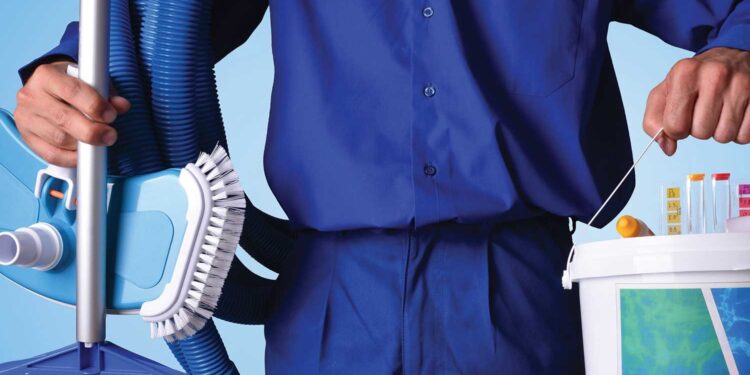Not a single recreation operator wants to open their pool cover next spring to unearth green, slimy, algae-filled water, or damage from freezing temperatures that result in costly repairs.
What can help avoid these nasty messes? Proper pool, spa and hot tub shutdowns. Closing pools the right way is an essential step to ensure a smoother and faster reopening next spring.
Timing Is Everything
Many factors impact the timing of pool closings. The obvious ones are region and climate. However, usage is also important. Since many pools have internal heating systems, they are suited for cooler weather usage well into the fall. This is especially true if they also have a nearby hot tub or spa where they can take a quick swim and then warm up in the tub. Therefore, many communities in these areas want to keep their pools open until October.
However, any pool must be ready to close before the first hard freeze arrives. Properly shutting down pools, spas and hot tubs prolongs equipment life and avoids damages. To reduce downtime, hire a professional to properly prepare pools for closing.
The goal is to neutralize, balance and sanitize pool water before winter, so it’s not green come spring. A pool service company will test the pH and alkalinity levels, and possibly recommend the use of a stain preventive, depending on the length of time the pool is shut down.
For chlorine and bromine pools, the service provider will shock the water with chlorine to remove waste, kill bacteria and algae, and remove other organic contaminants. They may also need to perform additional oxidation with a non-chlorine oxidizer.
Additionally, he or she may suggest the use of an EPA-registered algaecide due to the lack of winter filtration and use of certain cover types that may allow sunlight and fine organic debris and contaminants to enter the pool water.
The next step is to clean the filter and drain the pump, filter, heater and chlorinating equipment, and empty the chemical feeders. A service provider will disconnect electrical power to heaters or heat pumps, ensure circuit breakers are off and make sure all gas supplies and valves are turned off.
Pool, spa and hot tub pros know blowing the water out of the plumbing lines and plugging them is vital. No one wants frozen water in pipes to cause breakage. Regional differences and the type of pool cover will dictate the amount of water to drain from the pool.
Winterization can be a complex process, impacted by the region’s temperatures and precipitation. These factors, along with the specific pool, spa and hot tub products being used, will dictate your best practices to streamline closings, avoid damage and ensure smooth spring openings.
Nicole Wisniewski
Nicole Wisniewski is a staff writer for PHTA. For more information, emailmemberservices@phta.org.










